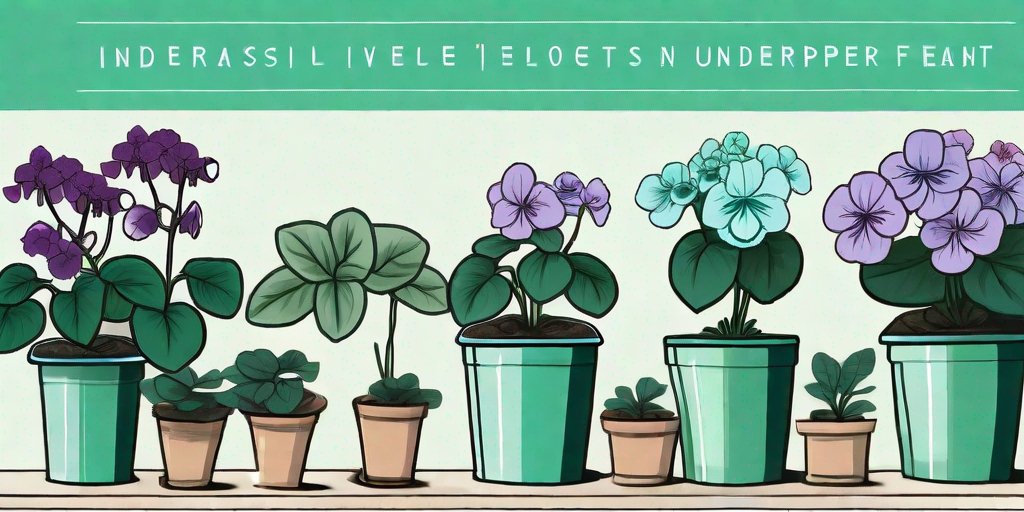
African Violets, known scientifically as Saintpaulia, are a crowd-favorite among indoor plant enthusiasts. With their velvety leaves and vibrant blooms, they add a touch of elegance and color to any space. However, these beauties can be a bit finicky, and if you're not careful, you might find yourself dealing with a variety of African Violet woes. But fear not, dear reader, for this guide is here to help you troubleshoot and triumph over these troubles.
Understanding Your African Violet
Before we dive into the nitty-gritty of troubleshooting, it's important to understand what makes your African Violet tick. These plants are native to the cloud forests of Tanzania and Kenya, where they enjoy a humid, stable environment. They're not fans of drastic changes, so if you're the type who enjoys cranking up the AC in the summer and the heat in the winter, you might have a bit of a diva on your hands.
Light, water, and temperature are the three key factors that can make or break your African Violet. Too much or too little of any of these can lead to a variety of issues. But don't worry, we'll go through each of these in detail.
Lighting Woes
Too Much Light
While African Violets love light, they're a bit like vampires - they prefer indirect sunlight. Too much direct sunlight can cause their leaves to turn yellow or get scorched. If your plant's leaves are looking more like a sunburnt tourist than a lush green forest, it might be time to move it to a shadier spot.
Remember, African Violets are understory plants in their natural habitat, which means they're used to being shaded by larger plants. A north or east-facing window is usually a good spot for them.
Not Enough Light
On the other hand, if your African Violet is looking a bit pale and hasn't bloomed in a while, it might be suffering from a lack of light. If its leaves are reaching out like they're trying to grab a ray of sunshine, it's a clear sign that it needs more light.
While African Violets don't like direct sunlight, they still need a good amount of light to thrive. If you don't have a suitable window, consider getting a grow light. These can be a great way to provide your plant with the light it needs without risking sunburn.
Watering Woes
Overwatering
Overwatering is a common issue with African Violets. These plants don't like to have wet feet, and too much water can lead to root rot. If your plant's leaves are wilting or turning brown, you might be drowning it in love (and water).
The best way to water an African Violet is from the bottom. Fill a saucer with water and let the plant soak it up for about an hour. Then, dump out any remaining water. This method ensures that the roots get water without the leaves getting wet, which can lead to rot.
Underwatering
While overwatering is a common problem, underwatering can also cause issues. If your African Violet's leaves are shriveling up and it's not blooming, it might be thirsty. Remember, these plants come from a humid environment, so they like a bit of moisture.
Again, bottom watering is the way to go. If your plant is particularly dry, you might need to let it soak for a bit longer. Just make sure to dump out any remaining water after an hour or so to prevent overwatering.
Temperature Woes
Too Hot
African Violets prefer a stable, moderate temperature. If your plant's leaves are wilting or turning yellow, it might be too hot. Try moving it to a cooler spot, away from any heat sources like radiators or sunny windows.
Too Cold
On the flip side, if your African Violet's leaves are curling or it's not blooming, it might be too cold. These plants don't like temperatures below 60°F (15°C), so make sure to keep them in a warm spot during the winter.
FAQs
- Why are my African Violet's leaves turning yellow?
This could be due to too much light or heat. Try moving your plant to a shadier, cooler spot.
- Why isn't my African Violet blooming?
This could be due to a lack of light or too cold temperatures. Make sure your plant is getting enough light and is kept in a warm spot.
- Why are my African Violet's leaves wilting?
This could be due to overwatering or too much heat. Make sure you're not overwatering your plant and that it's not too hot.
In conclusion, while African Violets can be a bit finicky, with the right care, they can thrive and bloom beautifully. Remember to provide them with the right amount of light, water, and temperature, and you'll have a happy, healthy plant.















